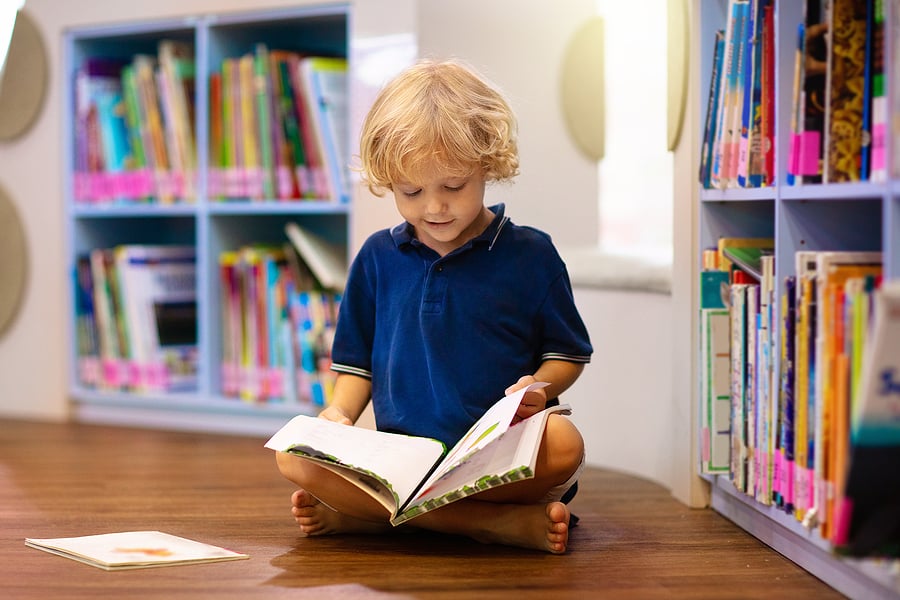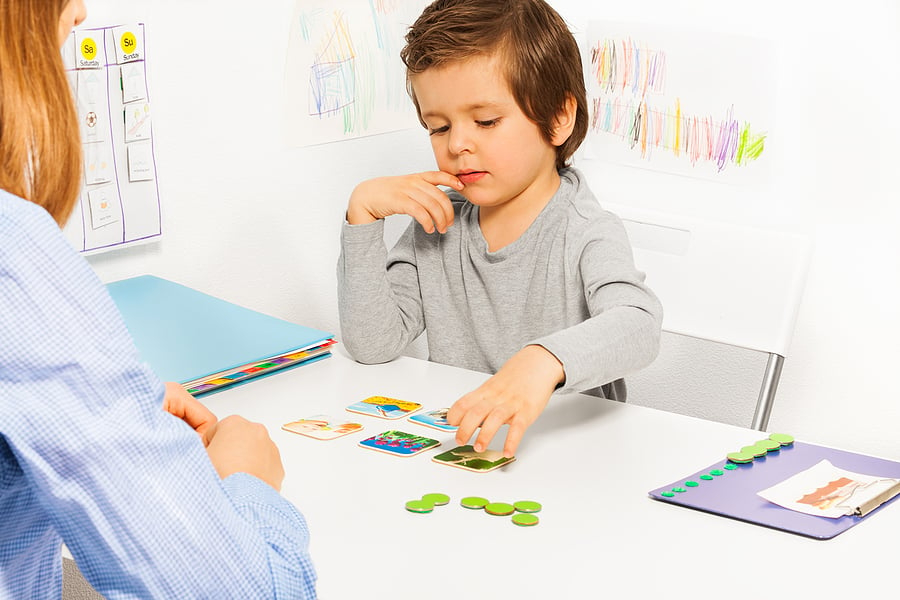Matching is a vital skill to teach preschoolers and one that will affect their future ability to read.
Here are some fun, hands-on matching activities for preschoolers. Play them at home or at school.
What is a Matching Activity?
A matching activity is any activity or game that teaches the basic mental skill of matching – or finding something that is the same.
For a child to understand matching, they need to grasp the concepts of same and different.
Something only matches if it is identical or just the same as something else. A picture of an apple can be matched to another picture of an apple, but not to a real apple.
Children are able to start doing simple matching from around 2-and-a-half to 3 years, and they continue to build this skill through the preschool years.
Matching activities can take many forms – from searching for another identical block to make the tower taller, to weeding a vegetable patch and leaving only the lettuce in the soil.
Why is Matching Important for Preschoolers?
Learning to match is important because children must be able to discriminate between same and different before learning some of the more complex cognitive skills, such as finding common relations, grouping (sorting) and ordering (seriation and sequencing).

Matching is also a pre-reading skill. When children are learning to read at a later stage, they need to be able to observe small differences in letters such as b and d, or words like doom and wood.
How Do You Teach Preschoolers to Match?
You can teach preschoolers the concept of matching by using the correct terminology.
For example, ask your children:
- Is this just the same?
- Find me the one that is just the same.
- Show me the one that is different.
- Which one is not the same?
Play games and do activities where you match physical objects. Do not rush into doing matching worksheets as these activities are not as meaningful as physically matching concrete objects.
The best learning happens when you engage all the senses. Matching does not always need to be a visual activity – you can also match by sound, taste, smell and feel.
Once your kids have learned to match actual items, introduce matching pictures and use worksheets much later.
Try the activities listed in this article, but don’t miss out on spontaneous, teachable moments that pop up in your day, as we often use matching in our day-to-day life.
17 Matching Activities for Preschoolers and Toddlers
Here are some simple, hands-on matching games and activities to engage all the senses.
1. Matching Socks
Take a few pairs of socks and mix them all up. For toddlers, start with 2 or 3 pairs only.
Get your children to pair up the matching socks. Older kids can do this to a timer, then try to beat their time with another round.

2. Matching Card Games
Matching card games are found in most homes and preschools. They are made up of pairs of matching picture cards.
You can easily make your own by cutting a sheet of cardboard into squares and drawing or pasting matching pictures on them. Then, shuffle the cards and get your kids to match them.
Give toddlers just a few pairs and older preschoolers multiple pairs.
These cards are also used to play a visual memory game.
Get your own set of printable memory card games in my store:

3. Colour Match
Use or make little blocks of coloured paper in pairs. These can be covered in clear contact plastic and stored in a bag to use again later.
Challenge children to match the colours. Start toddlers on the primary colours and give preschoolers all 9 basic colours – red, green, blue, brown, yellow, orange, purple, black and white.
4. Match the Action
Stand facing your child or the class. Perform any action – such as putting one hand on your head and stamping your foot – and children must copy the action.
Then, swap roles and follow your child’s actions.
This is an opportunity to teach older children that your left side (arms, legs, etc.) is what they see to their right. This is a complex skill so it is ok if they just copy the action as they see it.
5. Matching Sound Jars
Use identical jars for this activity. They should not be transparent.
Fill the jars with pairs of various materials, such as 2 jars with beans, 2 jars with rice, 2 jars with lentils, etc.
Mix them and get kids to shake them, matching the pairs together.
6. Match the Pattern
Make a simple pattern with blocks. For younger children, this could be 3 blocks in a row, for older children a more complex pattern such as 2 blue blocks, 1 red block, and 2 green blocks.
They must replicate the pattern.

7. Clapping Patterns
For this hand-clapping game, you clap a simple pattern and your children must clap it back to you.
Alternate between less and more claps, long claps and quick claps in succession.

8. Weeding
Next time you are doing some gardening, get your children to help you weed the vegetable patch. They must take out anything that doesn’t look like the lettuce or whatever you have planted.
9. Pack Away
At tidy-up time, instead of throwing all the blocks into a container, sort them and put all the blocks that are identical together.
Place all blue cubes in a row on the shelf, then all the red cubes, then the green cylinders, etc.
Children actually prefer using similar blocks during construction play and they will enjoy having the different types of blocks neatly visible.
10. Sticky Partners
Use a set of stickers that have multiples of the same sticker. Take one of each kind and stick it to a cupboard door or wall.
Children must stick the matching stickers over the ones you have placed on the door.
11. Find Your Partner
This is best played in a classroom or when you have multiple children.
Place a sticker on each child’s hand. They must move around the class, finding the person who has a matching sticker on their hand.
As the pairs find each other, they must sit down together so the remaining pairs can find each other.
12. Box Match
Print some pairs of pictures or draw some basic pictures and paste one of each onto a small box.
Children can drop the pictures into boxes that show the matching picture.
13. Touch and Feel Bag
In a bag that you can’t see through, place a few pairs of matching items, such as 2 socks, 2 pencils and 2 oranges.
Kids reach into the box and feel for the pairs and take them out, one pair at a time.
14. Choices
This is similar to the previous game but in this version, place one item in the bag (such as an orange) and show your kids three items (an orange, a banana and a pear).
They must choose which fruit matches the one they can feel in their bag.
15. Matching Smells
This is great to try with toiletries. Give your kids 2 or 3 pairs of items that smell and get them to match the ones that smell the same.
Try using different-smelling soap bars that look the same, or pour two different types of shower gels into small containers (2 of each kind).

16. Matching Tastes
For this activity, offer children small pieces of different varieties of apples, or even citrus fruits that look the same, and ask them to match the ones that taste the same.
17. Matching Veggies
For this activity, provide small cut-up pieces of vegetables that have the same colour, such as white veggies (turnips, potatoes, onions) or orange veggies (butternut squash, pumpkin, carrots).
Children must match the vegetables that are the same by looking carefully at the textures and variations in colour.
I hope you’ll enjoy trying out these simple preschool matching activities!
Try these grouping and sorting activities next.
Sources:
“Total Learning: Developmental Curriculum for the Young Child”, written by Joanne Hendrick.
“The Toddler’s Busy Book”, written by Trish Kuffner.


Jeannette Moore
Wednesday 15th of September 2021
Hello, I am Jeannette Moore, a student at Merritt College, Oakland, California in the child-development associate degree program. I would like some of these activates to surface in my classroom. But, funding is not appropriate for me at this time. However, I reserve the right for you to contact me later.
Tanja Mcilroy
Thursday 23rd of September 2021
Hi Jeannette, thanks for your comment. You are welcome to use these activities in your classroom.